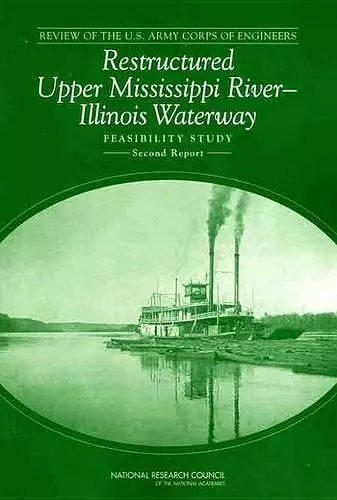Review of the U.S. Army Corps of Engineers Restructured Upper Mississippi River-Illinois Waterway Feasibility Study
Second Report
National Research Council author Division on Earth and Life Studies author Water Science and Technology Board author Transportation Research Board author Committee to Review the Corps of Engineers Restructured Upper Mississippi River-Illinois Waterway Feasibility Study author
Format:Paperback
Publisher:National Academies Press
Published:22nd Jan '05
Should be back in stock very soon

For the past few years, the Corps has been working on what is known as the Restructured Upper Mississippi River-Illinois Waterway Feasibility Study, the heart of which is a multibillion-dollar proposal to double the length of up to a dozen locks on the river. The Research Council first reviewed the feasibility study in 2001 during controversies over the accuracy of models being used by the Corps to justify lock expansion based on increased demand for barge transportation. More than 100 million tons of cargo—half of it grain destined for international markets, the other half goods such as construction materials, coal, and chemicals—are shipped along the navigation system each year. The locks, which along with dams allow barges to traverse uneven river depths, were originally designed for "tows" of barges up to 600 feet long, but the length of a typical tow has increased, forcing the Corps to look for ways to relieve congestion.
The book finds the U.S. Army Corps of Engineers has made good progress in broadening its proposed plan for navigation improvements on the Upper Mississippi River-Illinois Waterway system to give greater consideration to ecological restoration. However, the plan still does not provide sufficient economic justification for expanding locks on the rivers because of flaws in the models the Corps used to predict demand for barge transportation. Little attention is paid to inexpensive, nonstructural navigation improvements that could help better manage existing levels of barge traffic. The revised plan has been usefully expanded to include many creative and potentially useful ecosystem restoration measures. These measures, however, should be more firmly grounded in river science principles and more broadly consider ways the river's ecology might affect or be affected by navigation, recreation and other uses.
Table of Contents- Front Matter
- Executive Summary
- 1 Introduction
- 2 The Upper Mississippi River-Illinois Waterway System
- 3 Technical Issues
- 4 Implementation
- References
- Appendix A: Mississippi River and Illinois Waterway System
- Appendix B: National Research Council Board Membership and Staff
- Appendix C: Committee Member and Staff Biographies
ISBN: 9780309094368
Dimensions: unknown
Weight: unknown
100 pages